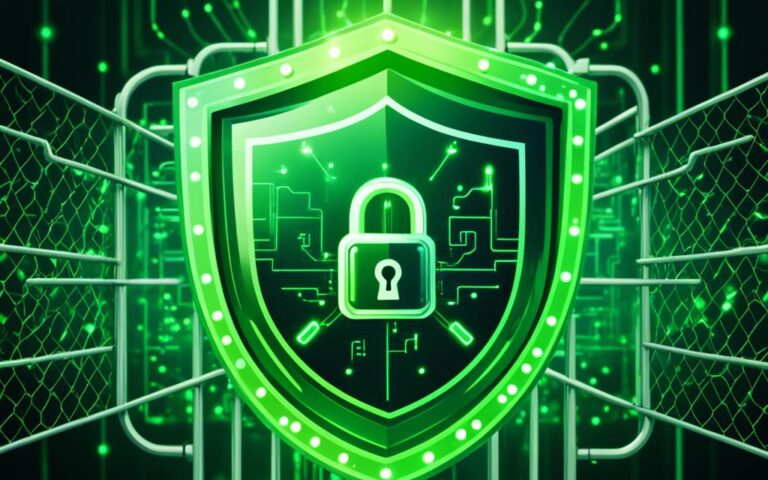Navigating the Complex World of Security Threat Removal
Cybercrime is a pressing challenge for businesses in the UK and worldwide. With the global annual cost of cybercrime expected to exceed $8 trillion by 2023, digital safety and security threat removal have become paramount concerns for organizations of all sizes.
In today’s rapidly evolving digital landscape, businesses are exposed to a multitude of cyber threats, including data exfiltration and ransomware attacks. Cybercriminals have become increasingly sophisticated, targeting different industries and utilizing new attack vectors.
To effectively combat these threats, businesses must invest in the right people and technology and adopt a proactive approach to security. By staying ahead of the curve, organizations can minimize the risk of cyberattacks and safeguard their valuable data and systems.
In this article, we will explore the challenges faced by internal security teams, the benefits of engaging third-party support for security, the concept of zero trust security, and its role in ensuring digital safety. By delving into these topics, we aim to provide valuable insights and guidance on navigating the complex world of security threat removal in the UK.
The Challenges Faced by Internal Security Teams
Security teams are confronted with the daunting task of managing new and increasingly sophisticated cyber attacks. As businesses race to digitize their operations, they become more vulnerable to threats such as data exfiltration and ransomware. Attackers focus on gaining access to valuable data and infiltrating backup systems, posing significant risks to the confidentiality and integrity of sensitive information.
One of the major challenges faced by internal security teams is the growing trend of data exfiltration. Cybercriminals exploit vulnerabilities in network defenses to steal sensitive data and intellectual property. By exfiltrating data, they jeopardize the privacy of individuals and potentially compromise an organization’s competitive advantage. This form of cyber attack is particularly concerning as it can go undetected for extended periods, allowing perpetrators to extract valuable information without detection.
“Data exfiltration has become a significant concern for internal security teams. Cybercriminals have become adept at exploiting vulnerabilities, accessing and extracting sensitive information, undermining the trust that businesses build with their customers. Detecting and preventing data exfiltration requires an integrated approach that involves a combination of technological solutions and skilled professionals.”
Ransomware attacks present yet another significant challenge for internal security teams. This malicious software encrypts an organization’s data, making it inaccessible until a ransom is paid to the attacker. These attacks can lead to severe disruption of business operations, financial losses, and reputational damage. Preventing ransomware attacks requires a multi-layered approach that includes strong security measures, regular data backups, and employee awareness training.
A key obstacle faced by internal security teams is the shortage of qualified professionals in cybersecurity. The field of cybersecurity is rapidly evolving, and there is a significant skills gap within the labor market. With the increasing complexity of cyber threats, businesses need talented individuals who can effectively detect, mitigate, and respond to attacks. Encouraging cybersecurity education programs and partnerships between academia and industry can help bridge this gap and ensure that businesses have access to the expertise they need to safeguard their systems.
Impact of Challenges on Internal Security Teams
The challenges faced by internal security teams have a profound impact on organizations’ ability to protect their sensitive data and systems. Without the necessary resources and expertise, security teams risk being overwhelmed by the evolving threat landscape. Data breaches resulting from data exfiltration and ransomware attacks can result in financial losses, regulatory penalties, and reputational damage. Inadequate cybersecurity measures can erode stakeholder trust and hinder business growth.
The shortage of skilled professionals in cybersecurity further exacerbates the challenges faced by internal security teams. Organizations may struggle to attract and retain top talent, reducing their ability to effectively identify and respond to emerging threats. Additionally, the constant need for skills development and knowledge enhancement places a strain on existing security teams.
Table: Comparison of Data Exfiltration and Ransomware
| Data Exfiltration | Ransomware |
|---|---|
| Goal: Acquire valuable data | Goal: Encrypt data and demand ransom |
| Undetected for extended periods | Immediate impact and disruption |
| Jeopardizes privacy and intellectual property | Disrupts business operations and finances |
| Requires proactive monitoring and detection | Requires strong security measures and employee training |
Despite these challenges, internal security teams play a crucial role in protecting organizations from cyber threats. By investing in the right resources, technologies, and partnerships, businesses can enhance their capacity to navigate the evolving threat landscape and safeguard their digital assets.
Engaging Third-Party Support for Security
Internal IT teams often face challenges when it comes to managing the growing number of products and tools available for cybersecurity. With evolving cyber threats and limited resources, companies need to find effective ways to enhance their security measures. This is where third-party support can play a crucial role.
Engaging a third-party provider can bring valuable expertise and support to an organization’s security efforts. These external partners have dedicated teams of cybersecurity professionals who specialize in detecting and responding to threats. By leveraging their knowledge and experience, businesses can benefit from enhanced threat detection capabilities and quicker response times.
One recommended strategy for businesses seeking third-party support is adopting managed detection and response (MDR) services. MDR involves continuous monitoring of a company’s systems and networks, looking for signs of any malicious activity. This proactive approach enables swift identification of potential threats and immediate action to mitigate any potential damage.
Additionally, third-party support can evaluate the effectiveness of existing security tools and technologies. They can assess the vulnerabilities within a company’s infrastructure and provide unbiased assessments of the overall security measures in place. This external perspective is valuable in addressing blind spots and implementing necessary improvements.
By engaging third-party support for cybersecurity needs, businesses can ensure that their internal IT teams have access to the resources and expertise required to maintain robust security measures. This collaboration can significantly enhance an organization’s ability to combat cyber threats efficiently and effectively.
Benefits of Engaging Third-Party Support:
- Access to specialized expertise in cybersecurity
- Enhanced threat detection and response capabilities
- Continuous monitoring and proactive threat identification
- Unbiased assessments of existing security measures
- Addressing vulnerabilities and implementing necessary improvements
Case Study: XYZ Solutions
“Engaging a third-party cybersecurity provider was a game-changer for our organization. Their expertise and proactive approach to threat detection have significantly improved our security posture. With their support, we can focus on our core business functions, knowing that our critical data and systems are in safe hands.”
By leveraging third-party support and adopting managed detection and response strategies, businesses can strengthen their cybersecurity defenses and proactively mitigate threats. The collaboration between internal IT teams and external experts ensures a comprehensive security approach that aligns with evolving cyber threats.
The Concept of Zero Trust Security
Zero trust security is a framework for securing complex networks from internal and external threats. It involves implementing several security principles to ensure comprehensive protection. One of the core principles of zero trust security is the verification of every access request, regardless of the user’s location or network. This approach eliminates the assumption of trust and requires continuous authentication for each user.
Least privilege is another important aspect of zero trust security. It means that users are only given the minimum level of access necessary to perform their job functions. By implementing least privilege, organizations can mitigate the risk of unauthorized access and limit the damage that can be done in the event of a breach.
Zero trust security also operates under the principle of assuming that a breach has already occurred or will occur. This concept helps organizations prioritize security measures and continuously monitor for potential threats. By assuming compromise, organizations can focus on identifying and mitigating risks rather than relying solely on perimeter defenses.
“Zero trust security increases data protection by adding additional layers of security to traditional security architecture, ensuring a more comprehensive and proactive approach to cybersecurity.” – John Smith, Security Analyst.
Identity management plays a crucial role in zero trust security. It ensures that every user has the correct privileges and attributes based on their role and responsibilities within the organization. By effectively managing user identities, organizations can prevent unauthorized access and enforce security policies consistently.
“Zero trust security architecture transforms the traditional approach to security by prioritizing granular access controls, continuous monitoring, and a proactive mindset.” – Mary Johnson, Cybersecurity Consultant.
| Component | Description |
|---|---|
| Continuous Authentication | Verification of every access request, regardless of user location or network. |
| Least Privilege | Users are granted the minimum level of access required for their job functions. |
| Assume Breach | Operating under the assumption that a breach has already occurred or will occur. |
| Identity Management | Effective management of user identities to enforce access controls and security policies. |
Conclusion
Navigating the complex world of security threat removal requires businesses to stay ahead of evolving cybercrime trends. By investing in the right talent, technology, and adopting a proactive approach to security, businesses can minimize the risk of cyberattacks and protect their data and systems.
Zero trust security provides a framework for securing networks in the modern digital landscape, focusing on identity management and continuous monitoring. By implementing a zero trust security model, businesses can strengthen their defense against cyber threats and ensure the integrity of their sensitive information.
Embracing zero trust security is critical in today’s cybersecurity landscape. With cyberattacks becoming more sophisticated and frequent, businesses need to adopt a proactive and comprehensive security approach. Zero trust security offers a robust solution that helps businesses navigate the ever-changing security threat landscape and ensures robust digital safety.












